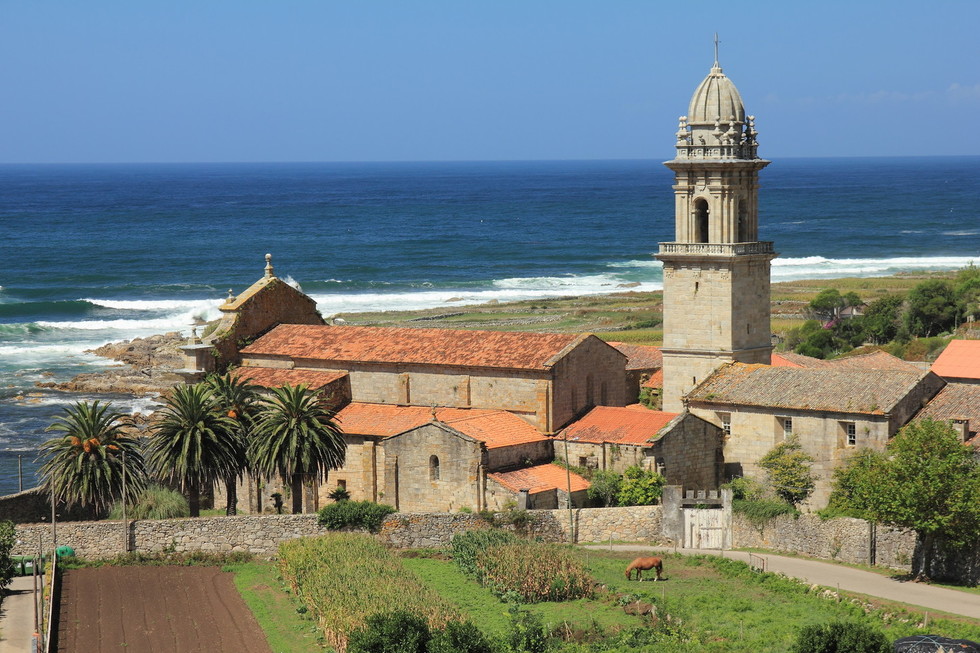Which is the most beautiful Camino de Santiago route?
The Portuguese Coastal Way is the most beautiful and easiest route of the Camino de Santiago, renowned for its coastal landscapes, accessibility, and rich cultural heritage. Ideal for all pilgrims.


The Portuguese Coastal Way stands out as one of the most impressive and accessible routes for pilgrims wishing to complete the Camino de Santiago. This route begins in A Guarda and follows the Atlantic coast to Santiago de Compostela, offering a unique combination of natural beauty, easy terrain, and rich cultural heritage.
Which is the Most Beautiful Camino Route?
The Portuguese Coastal Way has gained popularity among pilgrims due to its unique combination of stunning landscapes, accessibility, and cultural richness. This route offers a unique experience that blends the natural beauty of the Atlantic coastline with well-developed infrastructure, making for a more comfortable and accessible pilgrimage.
Additionally, the route is steeped in history and culture, giving walkers the opportunity to explore ancient cities and savor local cuisine, all while enjoying a less crowded and more tranquil path.
Scenic Beauty
Maritime Landscapes: Throughout the journey, pilgrims enjoy breathtaking views of the Atlantic Ocean, with golden beaches, towering cliffs, and serene estuaries. These views create a serene and inspiring environment, perfect for reflection and inner peace.
Natural Heritage: The route includes stops at places of great ecological and scenic value, such as Monte de Santa Trega, offering spectacular panoramic views of the Miño River estuary, and the Ría de Vigo, a biodiversity-rich enclave.
Historical Charms: Cities and towns like Baiona, known for its Monterreal fortress and picturesque old town, add significant historical and cultural value. These locations not only provide beauty but also allow pilgrims to immerse themselves in the rich history of the region.
Ease and Accessibility
Gentle Terrain: The Portuguese Coastal Way is known as the easiest route due to its predominantly flat terrain and well-signposted paths. This makes it ideal for both beginner pilgrims and those with more experience seeking a less physically demanding walk.
Well-Developed Infrastructure: The route is well-equipped with a wide network of hostels, inns, and tourist services. This facilitates trip planning and ensures that pilgrims have access to comfortable accommodation and necessary services throughout their journey.
Cultural and Gastronomic Experience
Local Gastronomy: The route offers an opportunity to savor exquisite Galician and Portuguese cuisine. From fresh seafood to local wines, the food along the Camino is a delight for the senses and an essential aspect of the pilgrim experience.
Community Interaction: The hospitality of the local communities enriches the pilgrim's experience. Interactions with local residents allow pilgrims to learn more about the customs and traditions of the region, creating a deep and memorable cultural connection.
Why is the Portuguese Coastal Way the Most Beautiful?
The Portuguese Coastal Way stands out as the most beautiful among the various Camino de Santiago routes due to its extraordinary variety of landscapes and profound historical value. Pilgrims who choose this route are rewarded with stunning views of the Atlantic, passing through beaches, cliffs, and green fields that alternate along the way.
Additionally, the cultural richness of its towns and cities, with historical monuments and centuries-old traditions, enriches the experience, making this route a visually and emotionally captivating journey.
Diversity of Landscapes: The route offers a varied range of landscapes, from beaches and dunes to green fields and lush forests. This diversity keeps the pilgrim's interest alive and provides a visually rich and constantly changing experience.
Historical Richness:
Monuments and Archaeological Sites: Along the way, pilgrims can visit important historical and cultural sites such as the 12th-century Monastery of Oia and the Tui Cathedral, a notable example of Romanesque and Gothic architecture.
Cultural Legacy: Each town and city along the Camino has its own story to tell. This cultural legacy is reflected in the architecture, traditions, and local festivals, offering pilgrims a rich historical narrative that accompanies their journey.
Tranquility and Peace:
Less Crowded: Unlike other more crowded Camino de Santiago routes, the Portuguese Coastal Way offers a more tranquil and contemplative experience. This lower influx of pilgrims allows for a more intimate connection with nature and provides a more relaxed and serene environment.
The Portuguese Coastal Way is known not only as the most beautiful but also as the easiest route. This path combines accessibility with an unparalleled visual and cultural experience, making it a unique opportunity for pilgrims worldwide to discover the beauty of the Atlantic coast while undertaking one of the most famous pilgrimages in the world.


